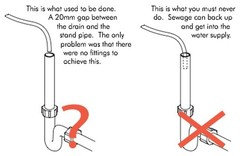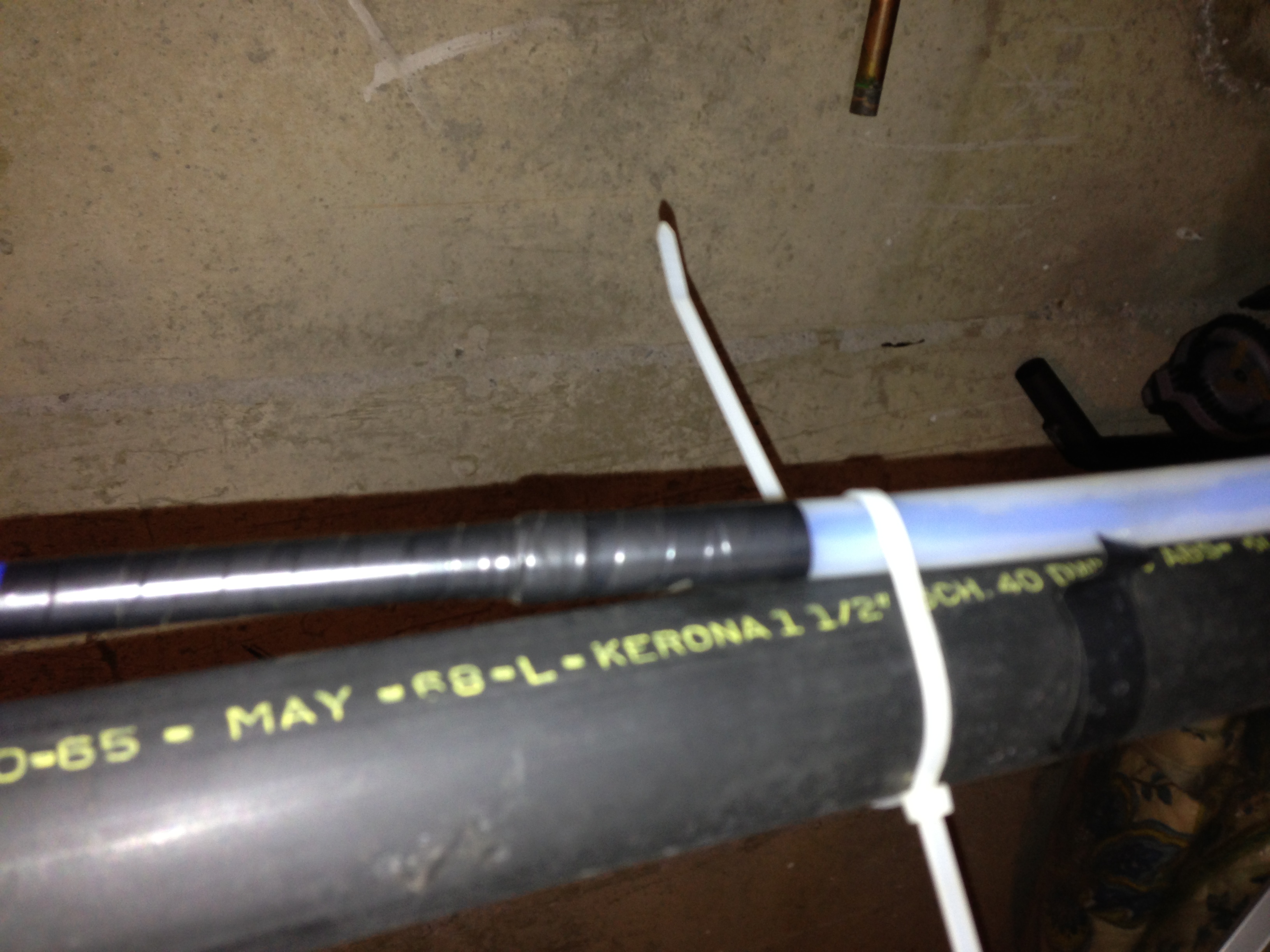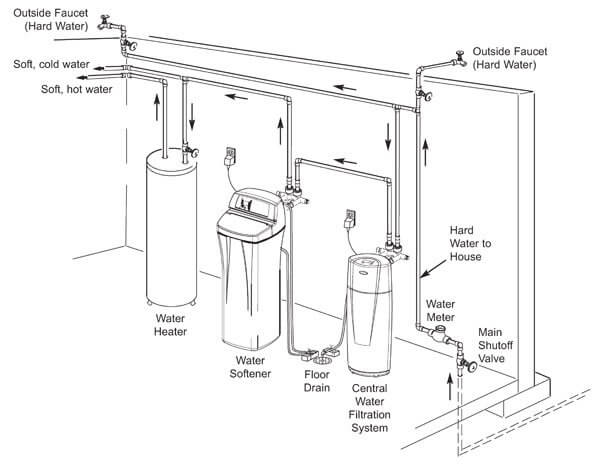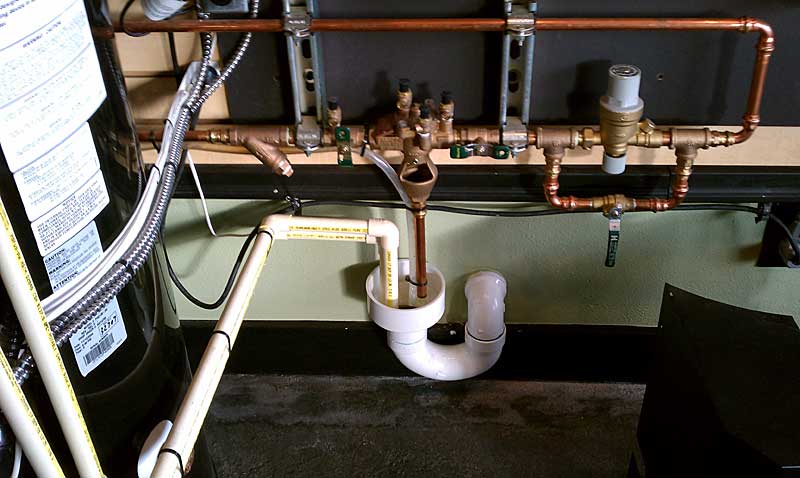A softener drain line must not be connected directly to the waste system but must be emptied into a laundry tray floor drain or properly trapped special outlet preserving an air gap of at least two times the diameter of the drain line but in no case less than 1 1 2 above the top of the receptacle used.
Connecting water softener discharge into sewer line.
I have a less than ideal situation of my water softener draining into my sump pit.
An addition ft for every 10psi past 40.
You cannot run water softener discharge line directly into sewer.
This is just such an unconventional approach.
There are actually three ways the sewage can get back into the drinking water lines.
For this purpose you will need same set up like for washing machine.
1 a siphon may be created by a city water pipe break or high water usage.
That means p trap and stand pipe.
The manual says the drain can be extended upwards of 6 ft.
Softener backwash discharge is under pressure and can be routed vertically some distance.
So i am good for 8 ft.
This is to prevent non potable water from flowing backwards possibly mixing and contaminating potable drinking water.
By code water softeners must be emptied into a laundry sink floor drain sump hole or properly trapped special outlet preserving an air gap of at least two times the diameter of the drain line but in no case less than 1 1 2 above the top of the.
From there they can drain naturally to some sewer access point in the house.
According to most plumbing codes a water softener drain line must not be connected directly to the household waste system.
To hit the 1 5 pvc.
Air gap and check valves are both good idea since it is an extra precaution that sewer won t enter your softener.
The sub atmospheric pressure within the city pipes would cause the sewage to be sucked into the water softener.





















